Borekitas
Borekitas: Hazan Family Favorites
May 21, 2012Borekitas
Despite multiple trips to Ireland, I have failed miserably at taking an important culinary opportunity. I’ve read about it, and put it on the agenda, but pudding, scones, and chips always get in the way of Irish Boxty.
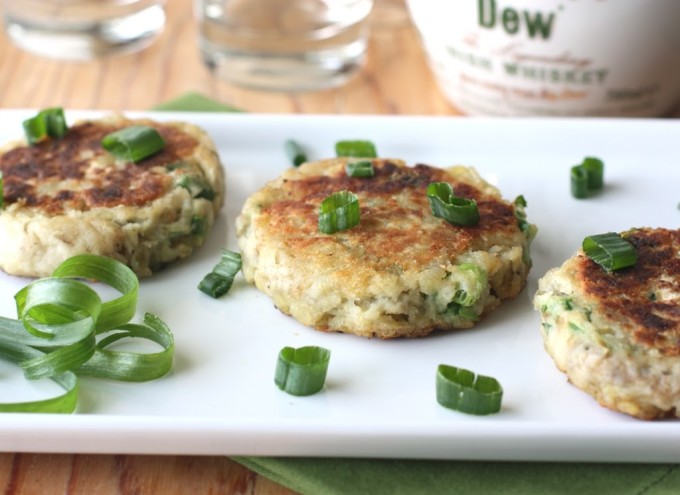
I decided not to adapt the recipe at all other than leaving out the bacon, so you can head over to Edible Ireland for the Boxty with Bacon and Scallions recipe. While you are there, take a look around. It is one my favorite new-to-me blogs in 2012.
Thanks for reading! All images and content are the property of Fake Food Free unless otherwise stated. Please do not republish full recipes or images without written permission. What is okay? Feel free to Pin images, share links to my posts or share the photo in a round up post with the title of this recipe and a link back to the post. Confused about copyright and food blogs? Here is some helpful information on Recipe Attribution. If you want to use a photo or full recipe, just ask. I’m sure we can work something out.
What’s the first food or drink you think of when you hear the word culture?
For me, it’s coffee.
Coffee brings about memories of travel and some of my favorite places in this world. And it’s not just the coffee itself that I enjoy; it’s the culture that surrounds it. I love to smell it brewing in the morning, and sharing a cup over conversation with my husband or friends. I find it fascinating to watch it grow in the fields, and I feel fortunate to support those who grow it as they share a piece of their world with me in each cup.
So a few weeks ago when I was asked if I would like to review a very special coffee, I was given a great opportunity to offer my support.
The Congo Coffee is a blend of African coffee beans that was described to me as smooth and balanced. I have to agree. I took it to work with me this morning and enjoyed every sip. This is a coffee that is worth an online order.
This is coming from someone who still recruits friends and colleagues to bring me coffee from Brazil, and who stocks up on 100% Blue Mountain coffee any time my feet touch ground in Jamaica. Yes, I love quality coffee.
And now is a great time to place that order as Equal Exchange will donate $2.00 per bag sold through their retail web store to the Panzi Foundation. The Panzi Hospital offers treatment, counseling and aftercare programs for over 2,000 survivors of sexual violence each year.
So, go. Buy the coffee-lover in your life a bag for the holidays.
When I agreed to review the coffee, I knew that I couldn’t show you a simple cup of coffee and be done with it. Although, a simple cup alone is worth a photo and sip. No, I needed to figure out a way to get it into some of my baking.
My favorite holiday coffee drink turned cupcake? That will work.
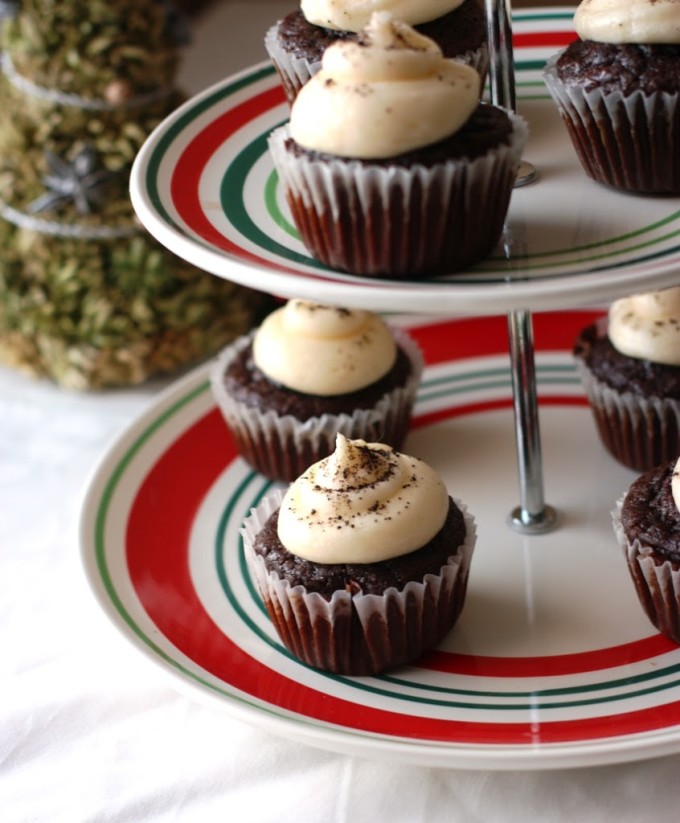
Although, I will say that these are made only slightly sweet on purpose. The eggnog frosting on top is the real deal and full of sugar. I wanted a less sweet cake to balance out the frosting so my final produce wouldn’t make your teeth hurt. The minimally refined sugar and strong brewed coffee did the trick.
In a bowl of a mixer fitted with the paddle attachment, combine the coconut oil and sugar. Mix for about 2 minutes, until almost smooth. Beat in the eggs, one at a time. Add the coffee.
In a separate bowl, stir together the cocoa powder, baking soda, flour and nutmeg. Gradually add the dry ingredients to the batter. Mix just until combined. Fold in the yogurt.
Divide the batter evenly among the 8 cups in the tin. Bake for 18 minutes or until a toothpick inserted in the center comes out clean. Remove from the oven and cool completely.
For the frosting, combine the butter and confectioner’s sugar in a mixing bowl and mix on medium and then medium-high until well combined. Slowly add the eggnog, 1 tablespoon at a time. Frost your cupcakes once cool and sprinkle each with a dusting of finely ground coffee.
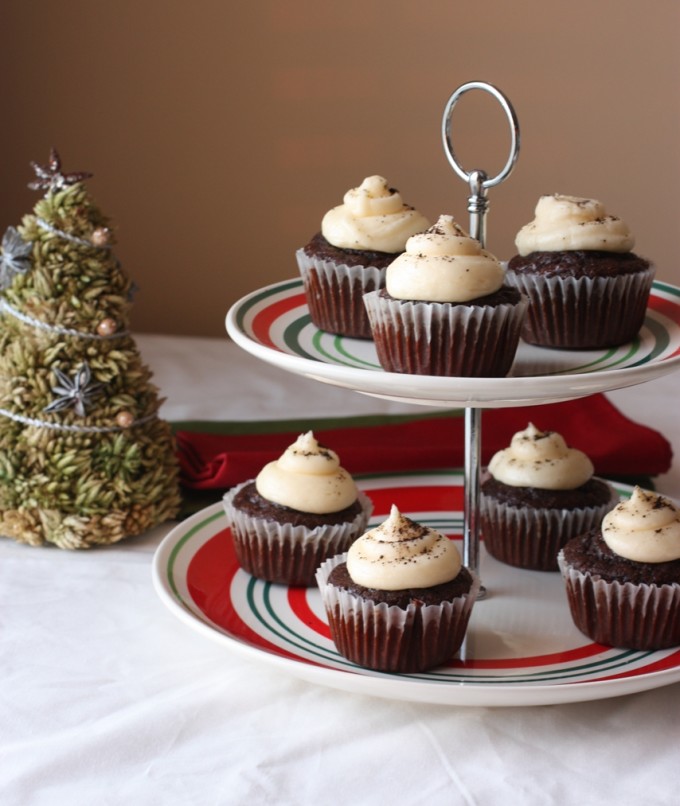
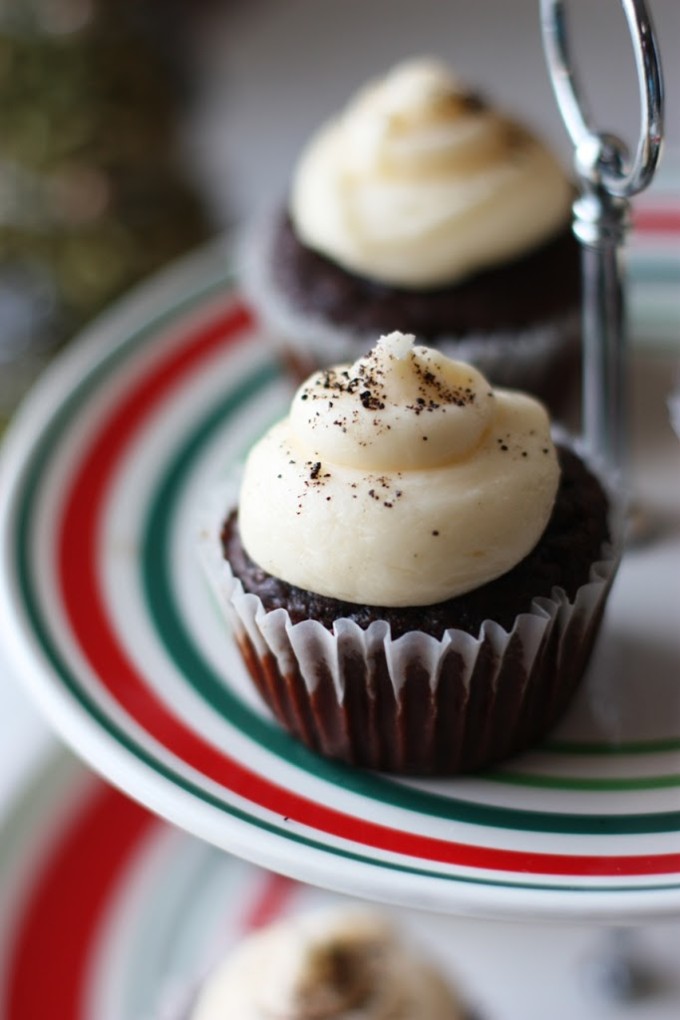
Disclosure: This coffee was sent to me free of charge. I was not required to use it in some pretty rockin’ cupcakes or write about it, and I received no compensation for doing so.
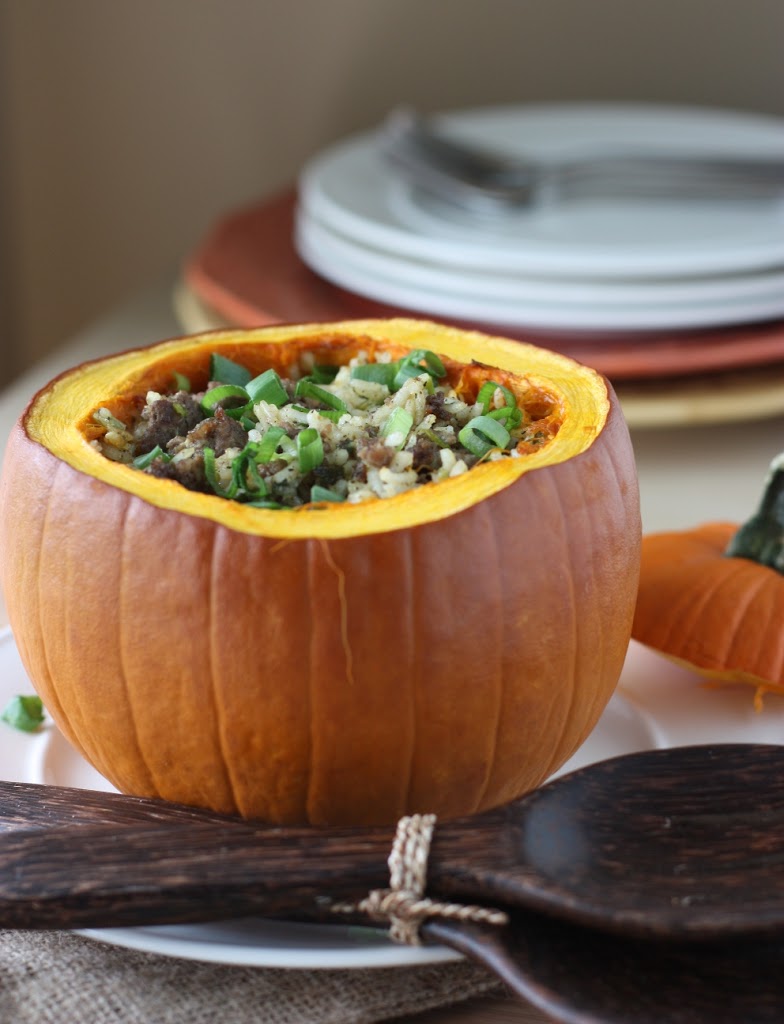
Other than a fondness for fry bread, I must admit that I know little to nothing about Native American cuisine or cooking styles.
However, autumn is the time of year when what little I do know about this cuisine does come to mind. In autumn we tend to think of those orange and brown tones to our foods and earthy flavors much of which encompasses the heart of Native American cooking.A few days ago I was notified of the anniversary release of two cookbooks, one of which was Spirit of the Harvest: North American Indian Cooking by Beverly Cox and Martin Jacobs. The book, a James Beard and IACP award winner, is overflowing with authentic Native American recipes from tribes throughout North America including the Cherokee, Navajo and Sioux.
Once I began reading, I knew my knowledge of this cuisine was about to change.
My favorite part of the book, aside from the wonderful recipes, is page 10. This page opens up into a map of the US. On this map are icons which represent foods traditionally used in different areas such as blue corn, buffalo, hazelnuts, deer, persimmons and sweet potatoes. While now it may be more evident in types of barbeque, the diversity of foods prepared across the US was as apparent then as it is today.
Similarly the recipes are separated into different regions and tribes throughout the book. Some of the recipes you’ll find include Iroquois Leaf Bread, Hopi Venison Stew, Honey-Ginger Baked Beets and Papago Cactus Salad.
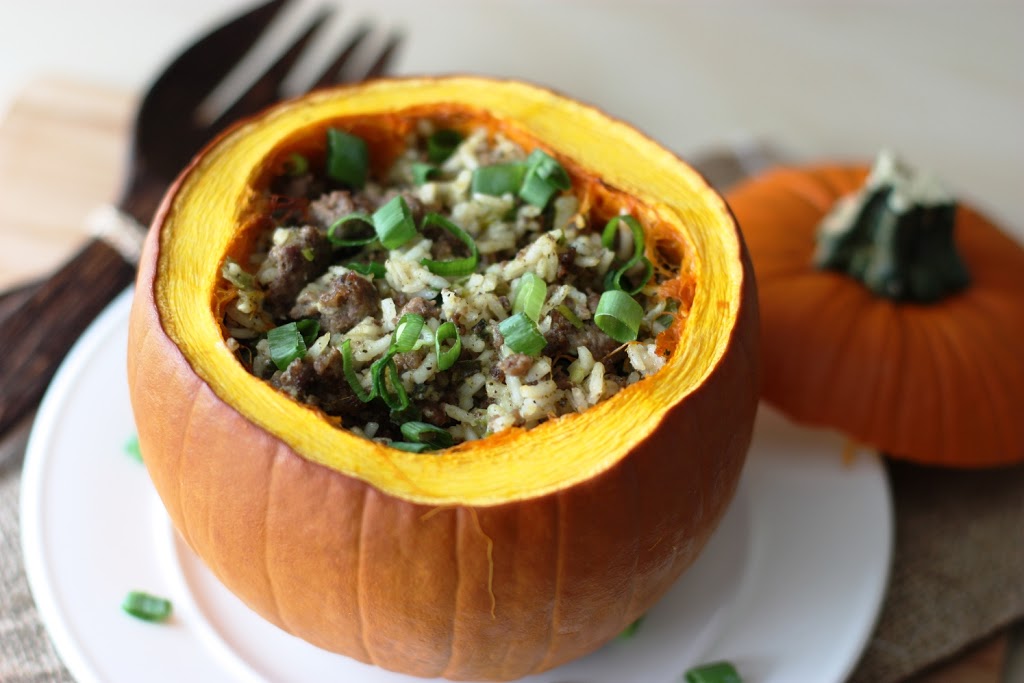
I wanted to go with something unique that I’d never tried before which, to be honest, wasn’t difficult. Almost every recipe in the book was new to me.
I settled on the impressive, yet surprisingly simple, Hidatsa Stuffed Sugar Pumpkin from the Great Plains region. Aside from scraping out a bit of pumpkin, nothing about this recipe is difficult, nor are the ingredients hard to come by. Yet, it is delicious and upon seeing it, no one will doubt your skills in the kitchen again.
The sage, the pumpkin, the hearty meat – all of it is perfect for autumn. Considering the presentation, I wouldn’t hesitate to also set it on the holiday table.
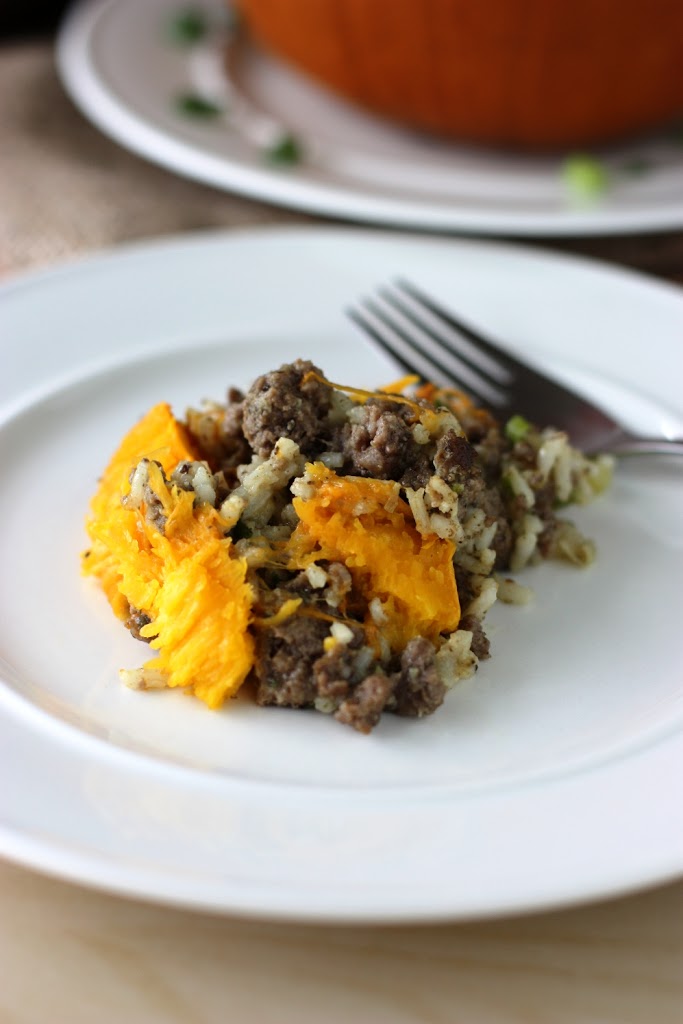
Hidatsa Stuffed Sugar Pumpkin
Reprinted with permission from Abrams Books
1, 4 to 5 pound sugar pumpkin
2 tsp salt
½ tsp dry mustard
1 to 2 tbsp vegetable oil or rendered fat
1 pound ground venison, buffalo or beef
1 medium onion or 4 green onions, chopped
1 cup wild rice, cooked
3 eggs, beaten
1 tsp crushed dried sage
¼ tsp pepper
Preheat oven to 350 degrees F. Cut the top from pumpkin and remove seeds and strings. Prick cavity with a fork and rub with 1 teaspoon of salt and the mustard.
Heat oil in a large skillet. Add meat and onion and sauté over medium-high heat until browned. Off the heat, and stir in wild rice, eggs, remaining salt, sage, and pepper. Stuff pumpkin with this mixture.
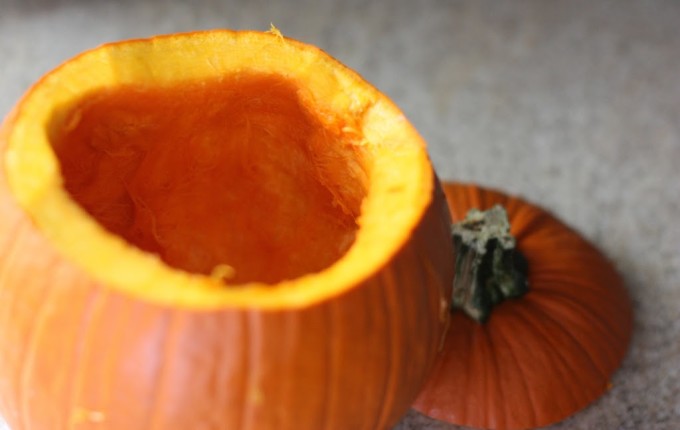
Place ½ inch of water in the bottom of a shallow baking pan. Put the pumpkin in the pan and bake for 1 ½ hour, or until tender. Add more water to the pan as necessary to avoid sticking. Cut pumpkin into wedges, giving each person both pumpkin and stuffing. (Or you can scoop out the stuffing with a bit of pumpkin which is what I did.) Serves 6.
As I mentioned, there were two books re-released so I don’t want to pass on sharing the second with you. That’s because it happens to be the ideal gift book for any creative food lover. The Secrets of Pistoulet by Jana Kolpen tells the story of a French farmhouse and was first published in 1996. When I started flipping through it, I thought – this would make the cutest gift. Then I read a bit more about it, The recipes are designed as little pull-out cards and written in paragraph form with very flexible directions. There’s Potage of Vision, Potage of Heart and Potage of Strength. It’s like a recipe book and an inspirational note all in one.
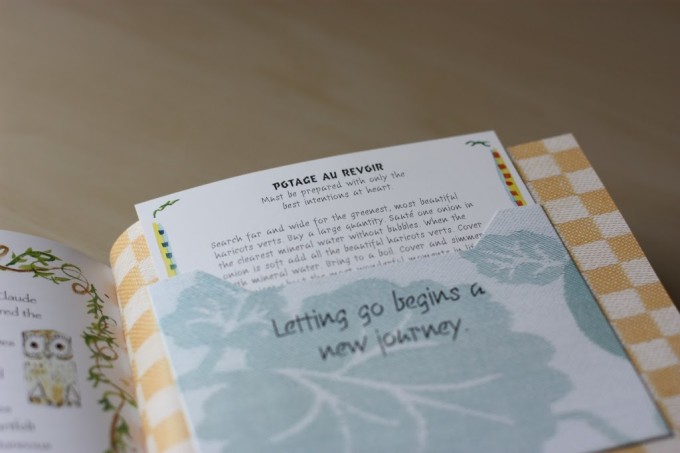
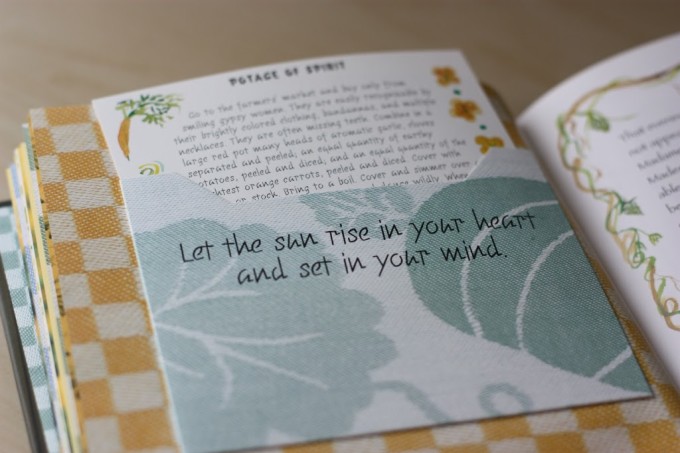
Disclosure: A review copy of these cookbooks was sent to me free of charge. I was under no obligation to blog about them and received no compensation for doing so.
When I think about all the countries in this world, I realize that I have made foods from very few. Take South African cuisine, for example. I’ve seen it in blog posts, there is even a restaurant in town, but it is one food that I have yet to explore.
These cute pastries are surprisingly easy to make. I adapted the recipe to include mascavo and Demerara sugars. I also had only unbleached, all-purpose flour on hand and used that instead of the recommended cake flour. Not wanting so much sugar and coconut in the meringue I reduced that a bit too.
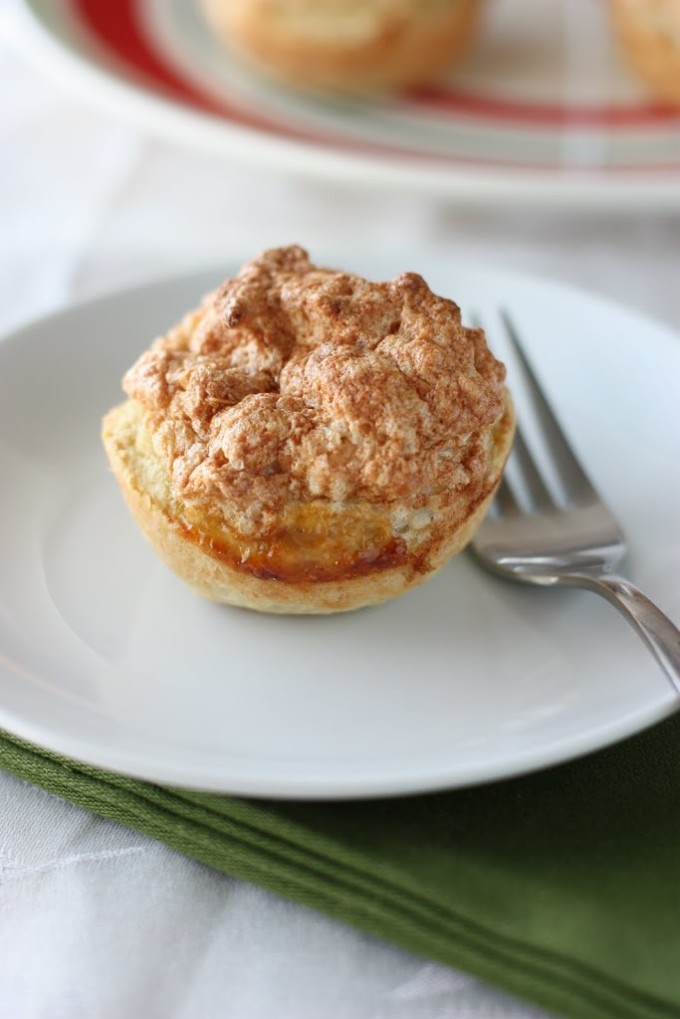
South African Hertzoggies
Modified from Hertzoggies, Cook with 7 de Laan
Makes: 16 to 18
Ingredients
Filling and Topping
I’ve been seeing a lot of gift lists on my favorite food blogs lately and I love reading through them. There are so many things I’ve never come across before and I end up with all kinds of new ideas.
Since I’ve come across lots of great things this year myself, I thought I’d put together my own list. So from now through Christmas I’ll be interspersing a few posts to highlight some of my favorite food-related items including books.
The first is something my husband and I found during a recent trip to Florida for a family wedding. We were killing time in the Florida Mall in Orlando while waiting to pick up family from the airport. As we walked by Teavana the white tea they were sampling caught our eye.
We tried it and were intrigued by the flavor. It was mildly fruity, slightly sweet with the warm spices of chai. We found out later that it was a mix of the Samurai Chai Mate and the White Ayurvedic Chai.
We rarely try something like this and simply have to buy some, but this was an exception. I think we surprised ourselves that we liked it since we are usually fans of Chinese green and black teas with no additional flavors or spices. This tea was just too unique to pass up. Not only in flavor, but also in the look. It was full of pieces of coconut and whole spices.
After settling on the tea, I started talking with the sales clerk about the sugar they used to sweeten the tea. She said that they used a very small amount of German Rock Sugar to release some of the aromatic flavors in the tea.
Of course with my interest in different types of sugars, I had to ask more about German Rock Sugar. This was the first I had ever heard of it. The sales clerk said that it was an unrefined sugar that just barely sweetened the tea. She was right about its sweetness. It has a wonderful flavor, which is why we bought some to compliment our newly purchased tea.
Since then I’ve been trying to seek out an exact definition and source of German Rock Sugar. A simple Google search repeatedly leads you back to the Teavana site. After digging a little deeper I did find a bit about its origin – East Frisia in the far Northwest Corner of Germany.
germanFoods.org states:
The traditional preparation of East Frisian tea is a well-defined ritual: First a piece of rock candy sugar called Kluntjes is placed in…cups… The freshly brewed hot tea is then poured on top of the sugar… The rock sugar will melt slowly which allows multiple cups to be sweetened with the same piece.
Learning the term Kluntjes led me to search for that specifically, which taught me that Kluntje – Kandis translates to rock candy (or something similar) in English. Another site I found did say that it was unprocessed and unrefined and I haven’t found any information on the actual process. A look at the Kölner website tells me that the type we bought from Teavana most closely resembles Kölner Krusten Kandis.
So I may not have learned all I wanted to about German Rock Sugar, but I definitely know a bit more than I did. And, of course, I’ve discovered a new type of sugar to experiment with!
If you have some tea lovers on your list, this blend would make a great gift. You can throw in some of the sugar with a history lesson to make the gift even more interesting and sweet.
I realize that I won’t be able to keep using the phrase, “when we were in Brazil,” forever. As days and years pass, those experiences will become less current and less relevant in my life. That saddens me a bit.
I feel I still have so much left to share of my time there. As the one year anniversary of our departure approaches next month, I’m reminded of a few things I still have yet to post about.
Not long before we moved back to the States we took one final trip to Curitiba with the intentions of heading out to Ilha do Mel again. After making the two hour drive to the coast and sitting in the car at the boat dock for about 30 minutes as it poured rain, we made the decision that while we wanted to see the island again, it wasn’t worth trekking through rain with no gear for the day.
Disappointed, we began the somber drive back to the city. As we continued we began to talk about Morretes, a place many had told us about, but that we hadn’t yet made it to. It is a historic town, nestled between the mountains on the way from Curitiba to the coast.
Many people take the scenic train from Curitiba, a bit of a local tourist excursion. After a quick Google search and a phone call we exited off the highway and began the process of reviving this mini-vacation which we thought was a complete loss only a few minutes before.
Morretes is a tourist-filled little town that is designed for such a population. However, it is not the type of tourist destination you are likely thinking of. It is popular among Brazilians from the surrounding areas, not international visitors. So while the historic display boards in the center of town do contain an English translation, we didn’t hear a word of it during our visit. We loved it.
This small city was incredibly intriguing even during a rainy, dreary day. It holds a significant amount of history for the country in relation to the days of gold discovery and its export back to Europe. However, if you ask someone why they visited Morretes you will likely get the answer “Barreado.”
Yes, they travel there for the food. My kind of people!
Barreado (ba-he-a-doo) is a traditional food from that state of Paraná, and now, Morretes is one of the only places you can find it. It’s surprising that it hasn’t spread to other areas because it was overwhelmingly popular. It was obvious everyone was there to eat it, and every single restaurant in town served it.
We ended up at Olimpo which looked to be new in town, maybe not as historic as the others, but it had a great balcony. Honestly you can’t miss it, or the other places which serve the dish. This town is completely centered on this specific food.
The meal began with an assortment of bolos – basically fried balls, most with fish or vegetable. Then there was a salad bar filled with lentil, wheat berry and mushroom salads along with fruits and vegetables. And if you were so inclined, you could have a shot from the massive jar of cachaça which was filled with marinating fruit. This was common in many of the restaurants we visited during our time in southern Brazil, but not in a jar with this much fruit!
Barreado is a meat stew made with beef, bay leaf, cilantro and other herbs. It is sealed in a clay pot to cook for 12 to 18 hours. Once at your table you eat it with mandioca (cassava, yucca) flour, rice and fried bananas.
Now this picture, I have to admit with embarrassment, is not the appropriate way to eat barreado.
You see, the waitress brought our food and asked us if we were familiar with the dish. We said no and apparently she must have slipped another question in there that we didn’t hear because she took our no to mean we didn’t want an explanation.
Only after we were halfway finished did we see a demonstration at another table. You are supposed to mix the meat with lots (and I mean lots) of mandioca flour. Stir it up and mash the meat, add broth, stir it more and then eat it with rice.
It literally looked like a meat paste when the waiter was done and I have to admit, not appetizing at all. Therefore, we kept eating it our way even after the demonstration.
I was completely surprised how much I enjoyed this dish. Usually when it comes to beef stew it all tastes the same, but the flavor of barreado really stood out from anything I’ve had before. There was an intense, rich and smoky flavor, not to mention the slow roasting made it incredibly tender with no visible fat in sight.
Along with a meal of barreado, ginger was a highlighted ingredient in the area. The small feira taking place during our visit was offering candies made of ginger and the ice cream shop we passed had a ginger flavor as well. I really wanted to try it so I was happy to learn our dessert would be bananas with ginger ice cream.
It was unique and delicious – spicy with fresh ginger and went so well with the bananas and cinnamon.
Looking back at meals like this makes me wonder how I ever complained about the food available to me in Brazil. I’m always reminded of how much I owe to the whole expat experience and the country. It taught me that my perceptions of must-have ingredients are simply that – perceptions, not at all necessities.
Considering the laborious preparation technique and equipment needed to make barreado, I doubt it is something I will ever be able to recreate. That definitely makes for one unique foodie experience that I’ll never forget.
If I haven’t mentioned it before, my mom has had a cake business for most of my life. So I was surrounded by beautifully decorated, great tasting birthday and wedding cakes for as long as I can remember.
Somehow the skill didn’t rub off on me. I’m not sure if it is lack of patience or creativity, but my cakes never turn out the way I want them to. However, it doesn’t keep me from trying, nor does it keep me from loving cakes and cake recipes.
It is full of recipes, some of which you may know such as Boston Cream Pie and Carrot Cake from Kansas, and some which may be new such as Chocolate Sauerkraut Cake from Michigan and the Tomato Soup Cake from New Jersey. Personally, I can’t wait to try the Kentucky Jam Cake and the Avocado Cupcakes which feature a California ingredient.
I read a less than stellar review a couple months ago which I can’t locate at the moment, so I wasn’t quite sure what to expect. The major complaint of this post was the freedom the author took with selecting recipes and putting on his own twists.
I really had no problem with Key Lime Pie, Whoopie Pies and Pumpkin Pancakes being in a cake cookbook. I say the more recipes the better. Overall, I’m glad to have this book in my collection. I think I will be referring to every time I need to make a special dessert or get creative with a birthday cake.
A few things I enjoy about this book:
Things I’m not so crazy about:
The recipe I got to try was the Connecticut Nutmeg Spice Cupcakes with Old-Fashioned Milk Buttercream. The one ingredient I had to leave out was the potato starch. The author says that it lightens the texture of cake and adds a slight flavor, but I was unable to find it at supermarkets here. I didn’t look everywhere, but I did check two with no luck.
The cake itself has a wonderful flavor. The nutmeg and rum (I used a spiced rum) blended so well together. I’ll likely make it again, maybe around the holidays.
As for the frosting, I was so excited to try a new variety. This one whipped up light and frothy and has a thin consistency. It actually reminds me of the fillings my mom used to make when recreating Hostess cakes. It doesn’t store very well, but if you are looking for a light buttercream, this may be a good choice. Next time I will likely use it for a filling rather than a frosting.
My next challenge will be substituting my favorite minimally refined sugars and whole grain flours to see how it turns out!
Connecticut Nutmeg Spice Cupcakes
Reprinted with permission
Yield: One 9-inch layer cake or 24 cupcakes (I got 12)
Dry Ingredients:
8 ounces (1 cup) superfine granulated sugar
5 ounces (1 cup) all-purpose flour
1 tablespoon potato starch
1/8 teaspoon kosher salt
½ teaspoon nutmeg, freshly grated
Pinch of allspice
Pinch of salt
1/8 teaspoon baking soda
Wet Ingredients:
3 ounces (6 tablespoons) butter, melted
¼ cup half-and-half
1 tablespoon rum
½ teaspoon vanilla extract
2 whole eggs
1 egg yolk
Preheat the oven to 325 degrees F and place the rack in the middle position. Lightly coat a cupcake tray with nonstick oil-and-starch spray and line 10 of the cups with paper liners.
Measure and combine all the dry ingredients in a deep bowl. Whisk lightly for about 15 seconds to blend.
Combine all the wet ingredients in a container with a tight-fitting lid and shake well for 15 seconds.
Lightly whisk the wet ingredients into the dry ingredients. This should take about 15 seconds.
Scoop or pour 2 ounces of the batter into the paper-lined cups. (Using a food scooper or ladle works best.)
Bake for 20 to 25 minutes, or until the tops of the cupcakes are golden brown and a wooden skewer inserted in the center of one comes out clean or with just a few crumbs.
Cool the cupcakes for 5 minutes before removing them from the tray. When they are room temperature, frost or decorate with Old-Fashioned Milk Buttercream.
Old-Fashioned Milk Buttercream
Yield: Enough for one 9-inch layer cake or 24-cupcakes
1 cup milk
2 ounces (1/4 cup) all-purpose flour
8 ounces (2 sticks) unsalted butter
8 ounces (1 cup) superfine granulated sugar
Pinch of salt
2 teaspoons vanilla extract
Quickly whisk together 4 tablespoons of the milk with the flour. This slurry will be somewhat thick, so whisk thoroughly to make it smooth. Press out any lumps with a flexible spatula, if necessary.
Whisk in the rest of the milk and transfer the mixture to a 2-quart heavy-bottom saucepan. Bring to a simmer for about 30 seconds over medium heat, whisking the whole time.
Remove the pan from the stove and place plastic wrap directly against the milk’s surface. (This is the best method to prevent a skin from forming.) Cool to room temperature.
Combine the butter, sugar, salt and vanilla in the bowl of a standing mixer fitted with the paddle attachment and mix at medium to high speed for 5 minutes.
Pour the cooled milk-and-flour mixture into the bowl and beat for another 5 minutes, or longer, as needed to achieve a spreadable consistency.

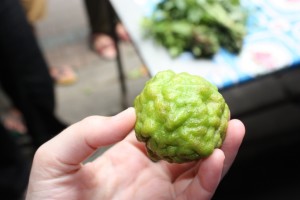
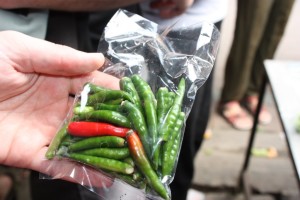
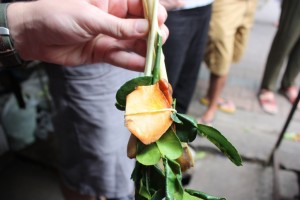
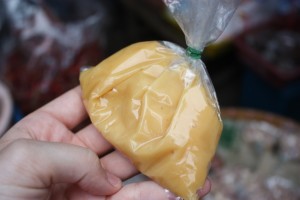
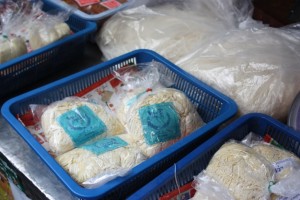
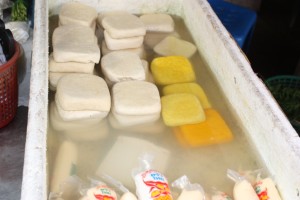
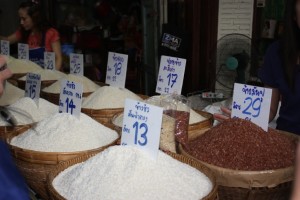
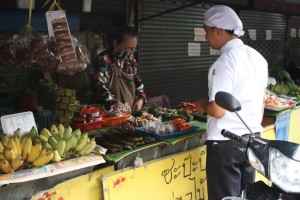
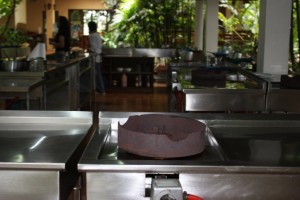
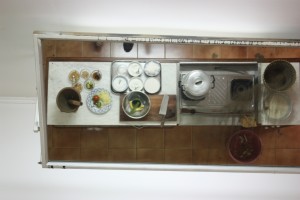
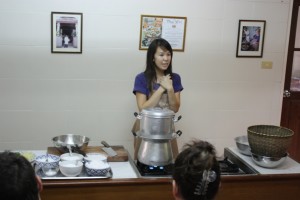
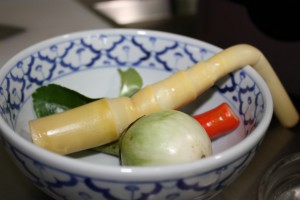
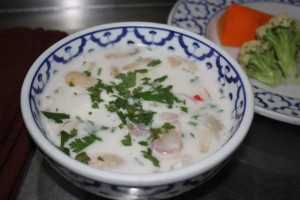
Red Curry with Fish, Gaeng Phed Plaa, was a traditional Thai curry with Thai eggplant and bamboo shoots. We didn’t get to make the curry paste ourselves, but it was explained to us. I prefer my curry with chicken, but this was a nice change.
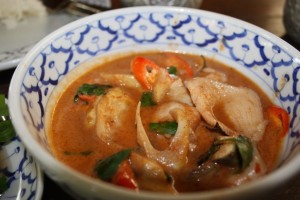
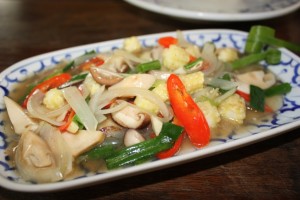
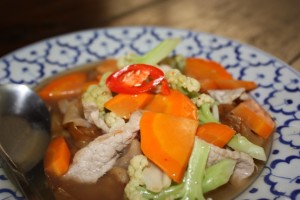
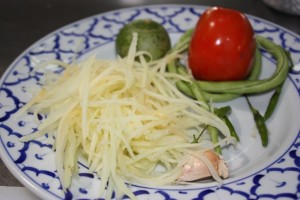
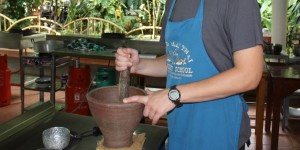
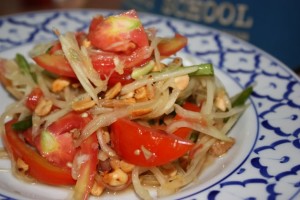
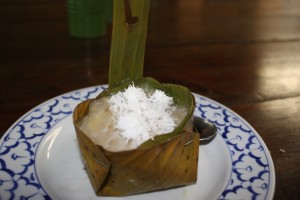
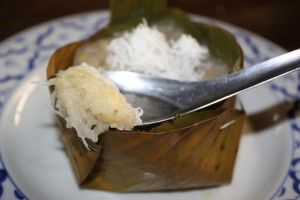
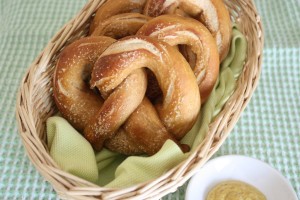
Eating these lovely treats is a far cry from a sacrifice, which is what I usually associate with the Lenten season. So that is why I think I’ll stick with the name “pretiola.” I will gladly take these as a little reward any time of year.
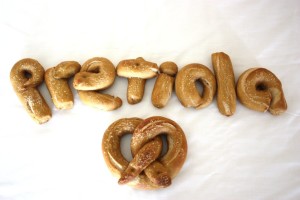
Resources for more info about pretzel history:
Catholic Education Resource Center: Lenten Pretzels
CatholicCulture.org: Pretzels for God
The History of the Pretzel
Snyder’s of Hanover: History of Pretzels